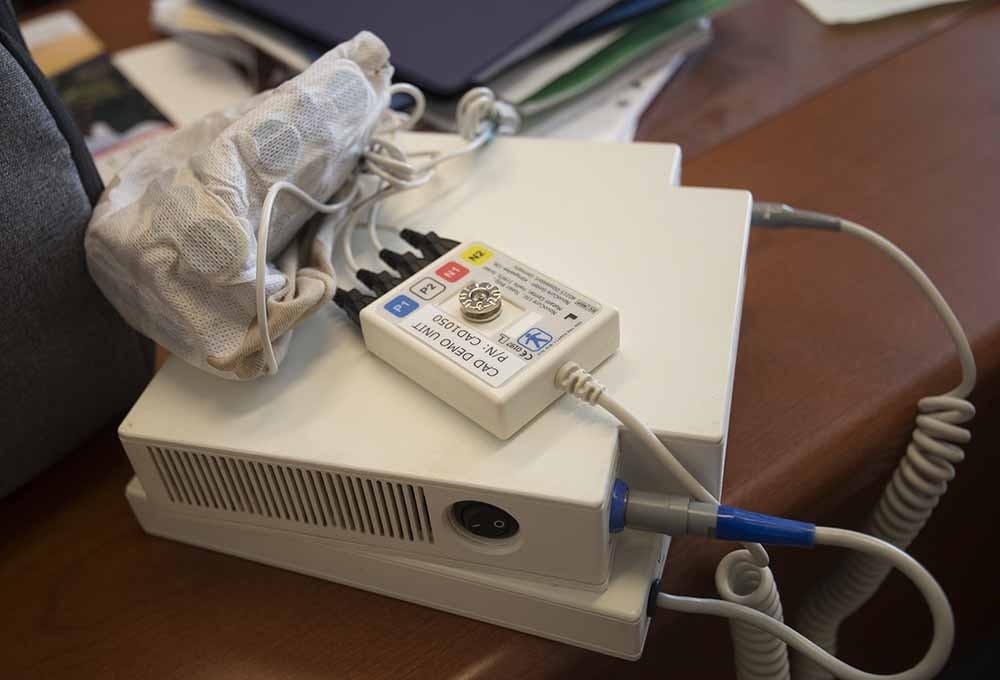A team of researchers at the School of Medicine, in conjunction with more than 80 other institutions, has developed a new wearable device that treats glioblastoma, one of the deadliest forms of cancer.
On average, glioblastoma has a two-year survival rate of 30 percent. The American Brain Tumor Association (ABTA) reports that the prognosis for glioblastoma patients is about 14.6 months, making it one of the most virulent forms of cancer.
This new treatment, called the Novocure device, is worn as a skullcap on the patient’s head. The cap emits a low voltage electrical field, which breaks the mitotic spindles — the threads that separate the dividing chromosomes that form when cancerous cells divide via mitosis. This prevents the cells from replicating and stops the cancer from spreading.
Neurology Prof. Dr. David Schiff talked about the process of choosing an appropriate voltage for the device.
“The frequency was chosen, one, because this stops cells from dividing in the test tube, and, two, this strength and frequency don’t stimulate electrically excitable tissue — like nerve cells and the heart’s conduction system — to fire,” Schiff said in an email.
The median survival among 210 glioblastoma patients who underwent Novucure was 19.6 months, increasing their prognosis by three months compared to patients who did not receive the treatment. The only observable side effect of this device was skin irritation on the scalp.
While this new device is a breakthrough in glioblastoma treatment, some patients may find it inconvenient to wear. The study found that some patients felt uncomfortable wearing the device on their head.
“There have been some patients who embraced it and sought it out precisely because it’s not chemotherapy and is so free of side effects,” Schiff said. “However, other patients object either to the idea of having to shave the entire scalp or being tethered to a device for the great majority of the day.”
Still, Schiff calls the clinical trial results for this device “a real shocker to the field.” The development of the oral chemotherapy drug temozolomide was the last significant breakthrough in glioblastoma treatment. Clinically tested throughout the 1980s and 1990s, this drug increased median survival by two and a half months.
Because glioblastoma is resistant to radiation and chemotherapy, it is nearly always fatal. However, this treatment is a significant step towards increasing the life expectancy of brain cancer patients.
“Glioblastoma virtually never metastasizes outside the brain,” Schiff said. “However, it is so invasive inside the brain (putting out microscopic tentacles) that it is not surgically curable.”







